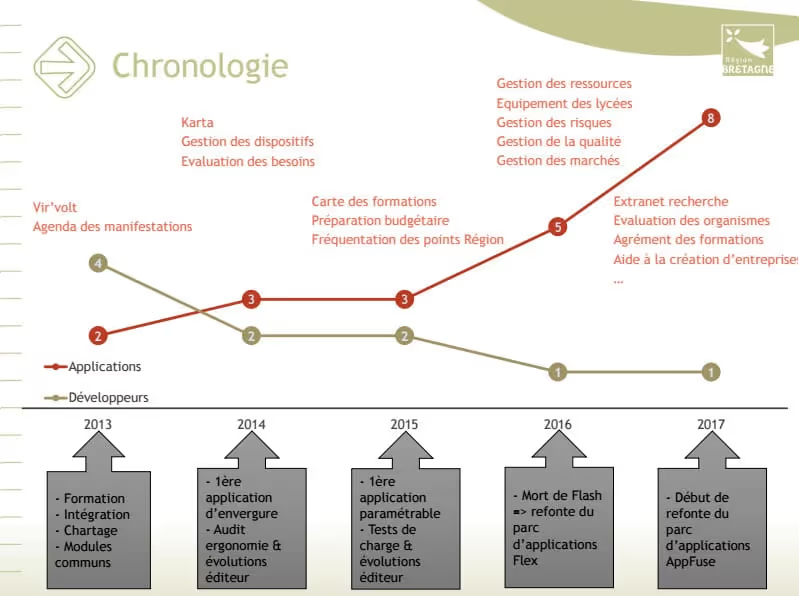

During our last user club and feedback, Benjamin Buffereau and Rosanne Quilly, in charge of the development of business applications for the Brittany region, were kind enough to give their feedback with the Simplicité platform.
The applications developed concern three different audiences:
After a quick overview of the responsibilities of the Brittany region and the field of action of the DSI, we are back to the heart of the matter. Why does the IT department choose to use a Low-Code platform?
Very early on, the Brittany region decided to anticipate development issues for the needs of the IT department. You have to do it quickly and better in order to unclog the back-log. The choice is strategic for the organization of IS control while improving IT productivity, industrialization, innovation and urbanization.
The first observation made by the Brittany region, the “from scratch”, works, but the limits are numerous:
The second observation concerns productivity. After a necessary period of increasing skills, productivity is increased tenfold. You just have to look at this slide to be convinced of it:

After several years of use, what is the assessment of using a Low-Code platform like Simplicité? What are the good sides? What are the disadvantages?
It is impossible to talk about a Low-code platform without making a comparison with Force.com (solution studied in competition with Simplicité). What emerged from this comparison, unlike Salesforce Simplicité, allows you to:
In addition, and still unlike Force.com, the Simplicité platform allows a choice of deployment: Private Cloud, Public Cloud, Hybrid Cloud or OnPremise, which is a definite advantage compared to the infinity of possible architecture choices for an IT department.
Is low-code time to go?
Advantages:
Possible obstacles:
In general, the feedback on the platform is very positive. It allows applications to be put into production exponentially with a limited number of developers.
In the end, the Brittany region focuses its development efforts on strategic applications for which development “from scratch” would take too long to carry out.
If you have questions do not hesitate to contact, we will be happy to answer your questions.

